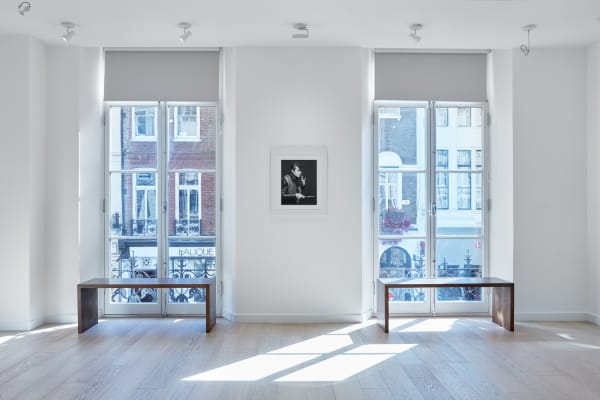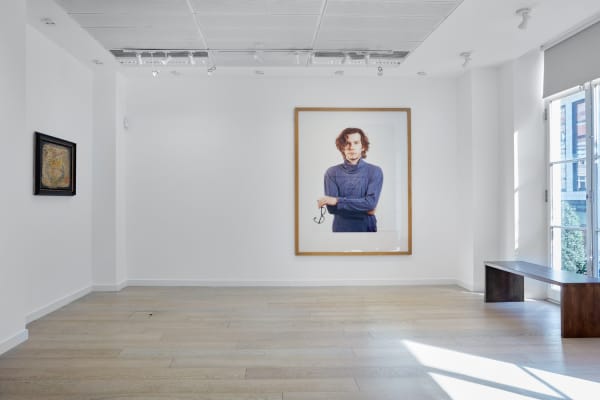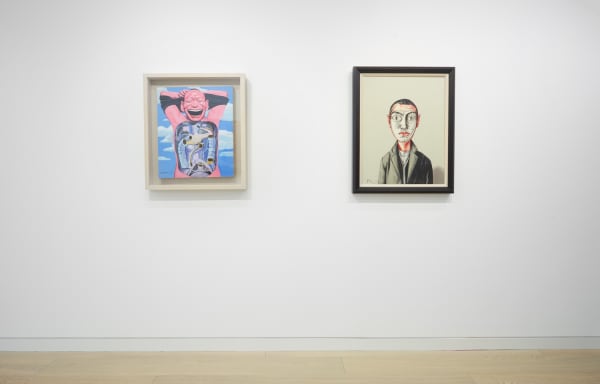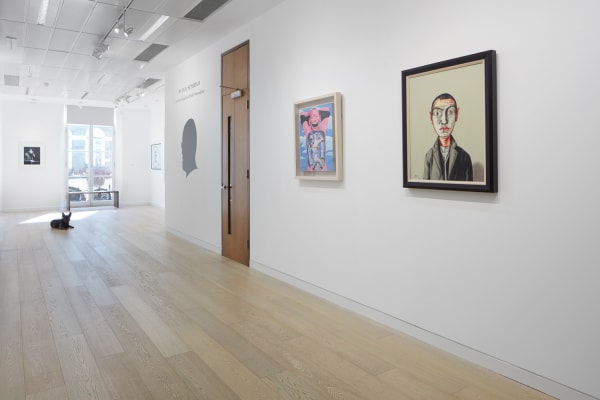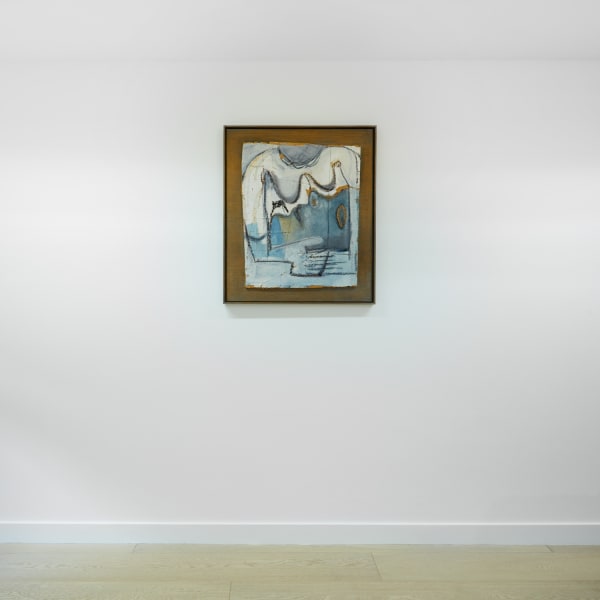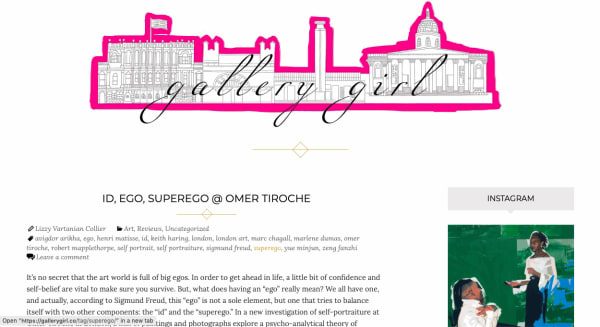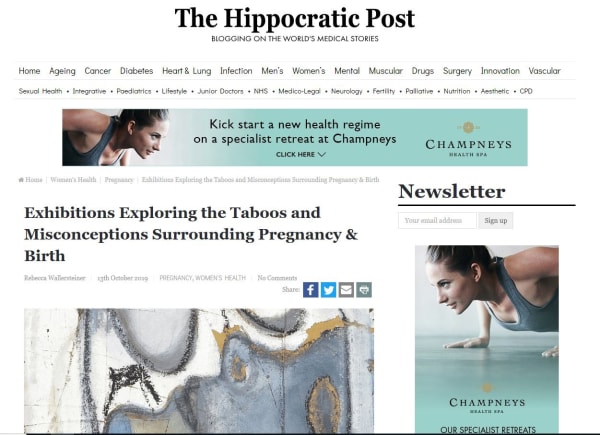Id, Ego, Superego: An Investigation of Self-Portraiture
Omer Tiroche Gallery is pleased to announce its forthcoming exhibition, Id, Ego and Superego: An Investigation of Self-Portraiture. This exhibition explores self-portraiture through Sigmund Freud’s psychoanalytical theory of personality, in order to gain a deeper insight into both the conscious and subconscious states of mind of some of the most celebrated artists from the 20th and 21st Century. By applying Freud’s theory, the show illustrates the extent and importance that the human psyche plays when artists tackle themselves as their subject matter.
Historically, self-portraiture dates back centuries to ancient Mesopotamia and was typically used as a means of reference or for educational purposes. It was not until the Renaissance that self-portraiture became a tool for self-promotion and cultivation; illustrating an artist’s ability to capture likeness, as well as elevating or highlighting their own status. This shift was partly due to the cheap manufacturing of mirrors that became more accessible and wide-spread. The ability to use oneself as a model was also economical. Consequently, an artist’s pursuit for aesthetically pleasing portraits gradually gave way to experimenting with the depiction of their own image, and self-portraits evolved into a form of self-exploration. As the artist plays a unique dual role of being both the subject and creator, glimpses of their intimate psychology are often revealed in their work.
The theory of personality is one of Freud’s most influential and enduring theories of psychoanalysis and argues that the human psyche is made up of three components; the ‘Id’, the ‘Ego’ and the ‘Superego’. The Id being the primitive, unconscious part of one’s personality that is devoid of any reality or moral compass; its only objective is to seek pleasure. The Ego encompasses rational thought and quells the Id’s irrational demands with reality. The Superego holds an individual’s moral values and understanding of social norms and strives to cultivate its ideal version of itself.
Freud argues that these three constructs are in constant ‘internal conflict’ and determine our psyche. For example, the Superego is usually at odds with the Id and aims to control its impulsive behaviour, especially those that are forbidden by society or deemed taboo, such as sex and aggression. Freud believed that creativity is powered by impulses and instincts, which are characteristics of the Id, and usually lie hidden in the subconscious but can surface through an artist’s work. Self-portraiture can often expose these elements of the human psyche subconsciously; Zeng Fanzhi’s Mask series was made throughout the 1990s during the Chinese Political Pop Art movement and represents the emotional and physical strain that the artist’s generation endured during China’s abrupt transformation from communism to a capitalist led society. A stark contrast from Chairman Mao’s reign, when artists in particular, were forced to hide their political views and identities out of fear of persecution, hence the ‘mask’. Going deeper, the Mask series can be interpreted through Freud’s theory of internal conflict and the artist’s own psychological state of mind. At first glance, the portrait conforms to the traditional composition of historical portraiture; the figure is facing out towards the viewer addressing them directly. Fanzhi’s stark and muted expression attempts to depict a neutral image of himself as a normal and conformed member of society, however, the mask itself is indicative of the façade that one often portrays in public – the Superego supressing the Id.
At times, the Id is more prevailing, an example of which can be found in Jonas Wood’s BW Self Portrait, 2008. Wood painted this self-portrait at the age of 31, not long after his first solo exhibition in 2006. It is reflective of an important period at the beginning of his career and illustrates his assertiveness and ambition. Wood’s puffed-up, bare chest and elongated neck evokes Freud’s Id; confrontational and primal. However, there is also a hesitation in his stance, as if he is forcing himself not to pounce out at the viewer, a subtle hint that the Superego is of course present to keep him in line. Furthermore, unlike in many of Wood’s other paintings, in BW Self Portrait he abandons his bold, bright colours in favour of a darker and more muted palette. This could be read as the artist synesthetically toning himself down, to not over inflate or exaggerate his ego, highlighting Freud’s argument that each component of the human psyche cannot exist without the other.
Analysing self-portraiture through Freud’s theory of personality, opens up a broader and more comprehensive dialogue between the artist and the viewer, highlighting the importance and power of the subconscious. As Freud argues, it is the human psyche that drives an artist’s creativity, and that art and psychology are inextricably linked. It is through this link that our perception of self-portraiture becomes enriched.
Featured artists: Avigdor Arikha | Victor Brauner | Marc Chagall | Marlene Dumas | Zeng Fanzhi | Keith Haring | Maria Lassnig | Robert Mapplethorpe | Henri Matisse | Yue Minjun | Thomas Ruff | Jonas Wood




